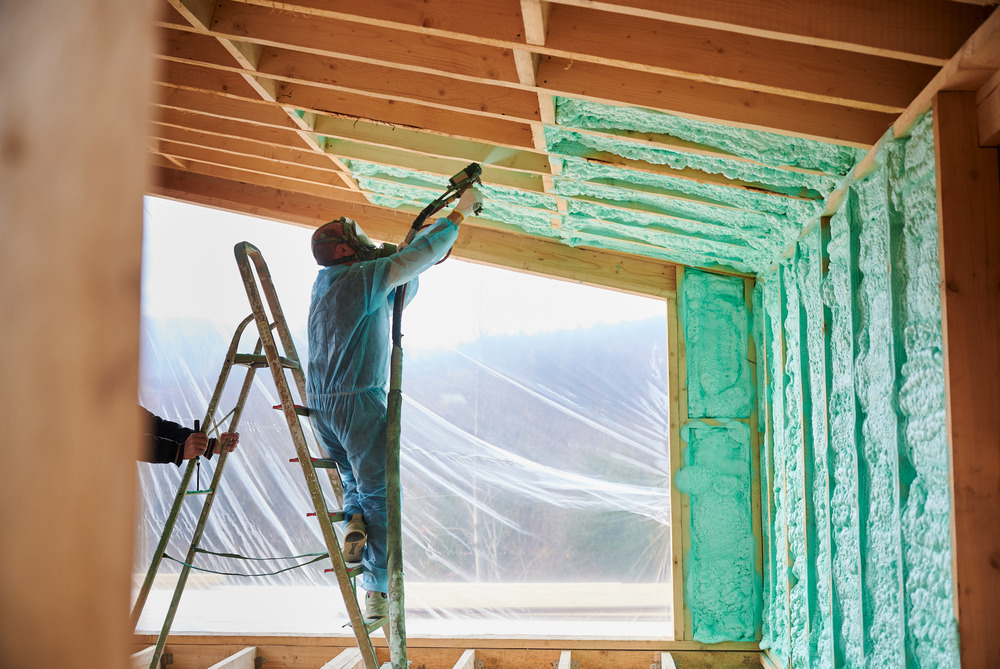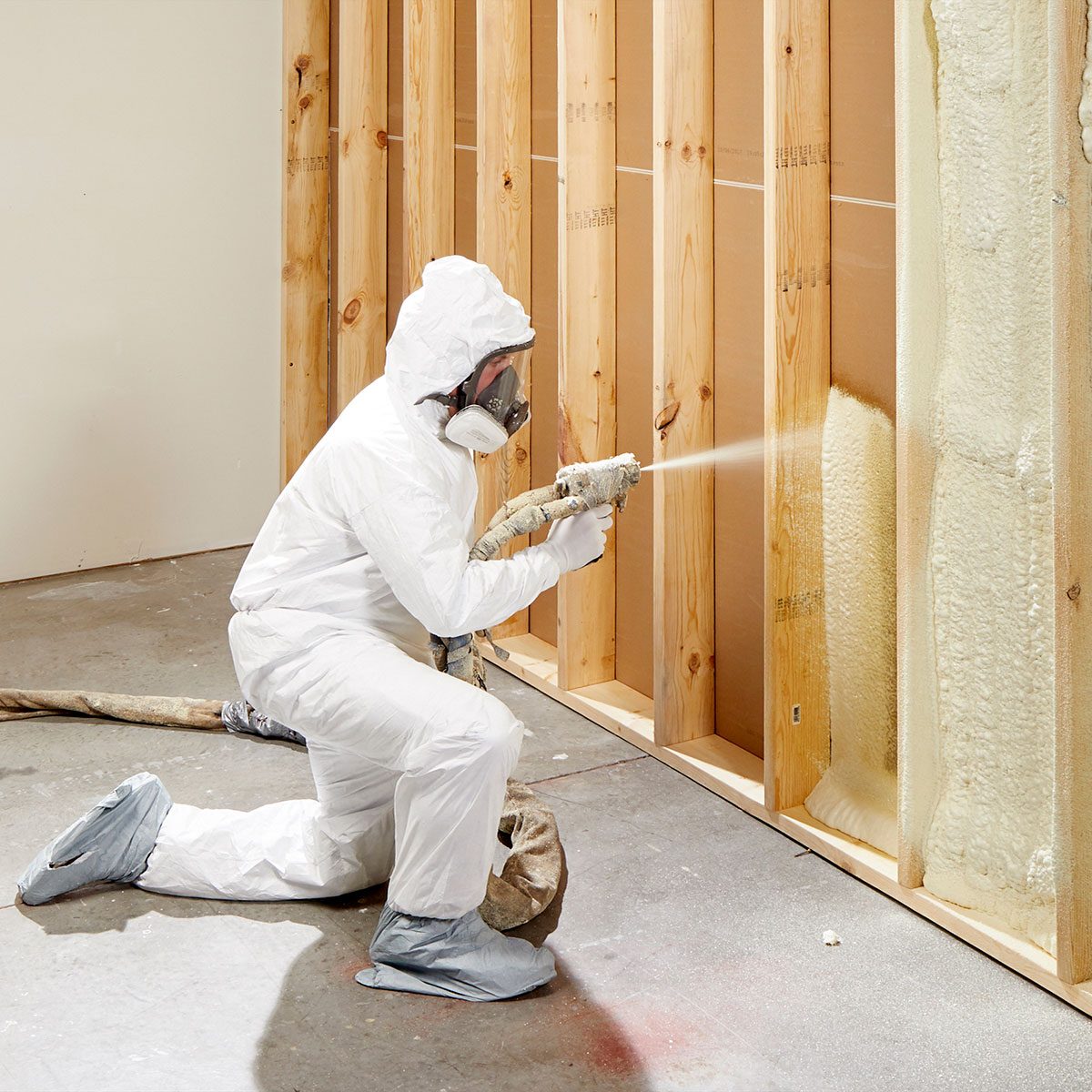Tips for Maintaining Your Spray Foam Insulation for Long-Term Performance
Tips for Maintaining Your Spray Foam Insulation for Long-Term Performance
Blog Article
Spray Foam: The Ultimate Option for Air Sealing and Insulation
Spray foam insulation has arised as a leading remedy for reliable air securing and thermal insulation, providing a distinct combination of homes that set it apart from traditional methods. Recognizing the complete range of its benefits, installment procedures, and comparisons with other insulation kinds is vital for making notified decisions.
What Is Spray Foam?
Spray foam is a functional insulation product that integrates the principles of air securing and thermal resistance to improve energy performance in buildings. Composed mostly of polyurethane or various other similar substances, spray foam is used as a fluid that expands upon contact with surface areas, creating a strong, continuous layer of insulation. This unique property permits it to fill up voids, fractures, and voids that typical insulation materials might neglect, providing a premium air seal.
There are two major kinds of spray foam: open-cell and closed-cell. Open-cell spray foam is lighter and much more flexible, using excellent noise absorption and a lower R-value per inch - Spray Foam. On the other hand, closed-cell spray foam is denser, providing a greater R-value, moisture resistance, and added architectural integrity to constructing components
The application procedure generally includes specialized devices, making certain a seamless application that abides by various substrates, consisting of metal, wood, and concrete. This adaptability makes spray foam appropriate for both brand-new constructions and retrofitting existing frameworks. Its capacity to create a closed obstacle dramatically adds to minimizing power consumption and improving indoor air top quality, thereby making it a preferred option amongst builders and property owners alike.
Advantages of Spray Foam Insulation
One of the most significant advantages of spray foam insulation is its remarkable ability to create a continuous air barrier, which efficiently lessens energy loss. Unlike standard insulation products, spray foam broadens to fill up fractures and spaces, making sure that air leak is dramatically lowered. This particular not just improves energy effectiveness however also results in lower utility costs with time.
In addition, spray foam insulation supplies remarkable thermal resistance, adding to a much more steady interior environment. Its high R-value per inch enables efficient insulation in confined spaces, making it optimal for attics, wall surfaces, and crawl rooms. The moisture-resistant residential properties of spray foam assistance prevent mold and mildew and mildew growth, advertising healthier living problems.
An additional vital benefit of spray foam insulation is its sound-dampening top qualities (Spray Foam). It successfully reduces sound transmission between areas, producing a quieter and more comfy home environment. The longevity of spray foam likewise stands out, as it does not droop or settle gradually, maintaining its efficiency throughout its lifespan
Exactly How Spray Foam Works
Comprehending how spray foam insulation works is essential for appreciating its performance in air sealing and thermal resistance. Spray foam insulation contains two main parts: isocyanate and polyol resin. When these components are combined, they undergo a chain reaction that creates the material to broaden swiftly, creating a thick foam that loads gaps, fractures, and dental caries.
As the foam broadens, it complies with surface areas, forming a closed seal that substantially lowers air infiltration. This characteristic makes spray foam insulation extremely efficient at preventing drafts and moisture penetration, which can cause power loss and click over here damages with time. Additionally, the closed-cell variant of spray foam provides remarkable thermal resistance because of its inflexible framework, great post to read properly decreasing heat transfer.
The unique homes of spray foam enable it to satisfy uneven surface areas, making sure detailed protection and a smooth barrier. Consequently, spray foam insulation not just improves power effectiveness but likewise contributes to enhanced indoor air high quality by lowering the build-up of allergens and contaminants. Ultimately, understanding the mechanics behind spray foam underscores its duty as a premium selection for insulation and air securing in both domestic and commercial applications.
Setup Process Review

Before installment, the space should be appropriately cleaned up and prepped, making certain that surfaces are devoid of particles, dust, and moisture. Since pollutants can jeopardize attachment and total efficiency, this action is crucial. Once the area is prepared, the application entails blending the two components of the spray foam, which expands upon contact and fills spaces efficiently.
Trained experts must carry out the setup, using specific devices to make sure consistent protection additional info and ideal density. Safety precautions, including wearing safety equipment and making certain correct air flow, are critical throughout this procedure. After application, the foam usually remedies rapidly, forming a strong obstacle that improves energy effectiveness.
Comparing Spray Foam to Traditional Insulation
When examining insulation options, spray foam insulation stands out in contrast to standard products such as fiberglass and cellulose. One of the main benefits of spray foam is its remarkable air securing abilities. Unlike fiberglass and cellulose, which can enable air seepage, spray foam expands upon application, filling gaps and crevices to create an impermeable seal. This leads to enhanced power efficiency, as much less heated or cooled air gets away the home, resulting in lower energy bills.
Additionally, spray foam supplies a greater R-value per inch than standard insulation kinds, providing even more effective thermal resistance in a thinner account. This characteristic is especially advantageous in spaces with minimal cavity deepness. Furthermore, spray foam is resistant to dampness and mold growth, which can be a substantial issue with cellulose and fiberglass, specifically in humid atmospheres.
Nevertheless, spray foam insulation commonly carries a higher in advance price than its traditional counterparts. House owners have to weigh this preliminary financial investment against long-term power cost savings and performance advantages. Inevitably, while both insulation kinds serve their objective, spray foam arises as an advanced option for modern insulation needs, specifically in terms of air sealing and thermal performance.

Conclusion
In recap, spray foam insulation represents a highly efficient option for achieving ideal air securing and thermal resistance. Its one-of-a-kind buildings, including wetness resistance and sound dampening, make it appropriate for numerous applications in both brand-new building and constructions and retrofitting jobs (Spray Foam). Although the first expenses may be higher compared to conventional insulation products, the lasting advantages, such as considerable power savings and enhanced interior air top quality, warrant the financial investment and emphasize its worth in modern-day building methods.
Spray foam insulation has actually emerged as a leading remedy for efficient air sealing and thermal insulation, using a special mix of homes that establish it apart from typical techniques.Spray foam is a flexible insulation product that integrates the principles of air securing and thermal resistance to enhance power performance in structures.When evaluating insulation choices, spray foam insulation stands out in contrast to typical products such as fiberglass and cellulose. Ultimately, while both insulation kinds serve their function, spray foam arises as an extra advanced service for modern-day insulation demands, especially in terms of air securing and thermal effectiveness.
In summary, spray foam insulation represents a very efficient remedy for achieving optimum air securing and thermal resistance.
Report this page